How to Water Succulents and Cacti

I thought watering plants was easy… until I killed my first couple (dozen) succulents.
Since then I’ve learned a lot about caring for succulents and cacti. How you water them is especially important. Watering incorrectly probably accounts for 90% of all succulent deaths!
Once you figure out how to water properly, it’s almost impossible to kill them!
It’s not that watering succulents is difficult at all. You just need a different approach than for most other plants.
Read on to find out how to keep your succulents and cacti happy and healthy!
Jump to:
- How to Water Succulents and Cacti
- How Often to Water Succulents and Cacti
- Root Rot
- How to Tell When it’s Time to Water Your Succulents
- Finger Test
- Wait for Wrinkled Leaves
- Soil Moisture Meter
- Seasonal Differences
- Seasonal Plant Dormancy
- How Much to Water Succulents and Cacti
- Watering Technique
- In Pots Without Drainage
- Getting Plants on a Schedule
How Often to Water Succulents and Cacti
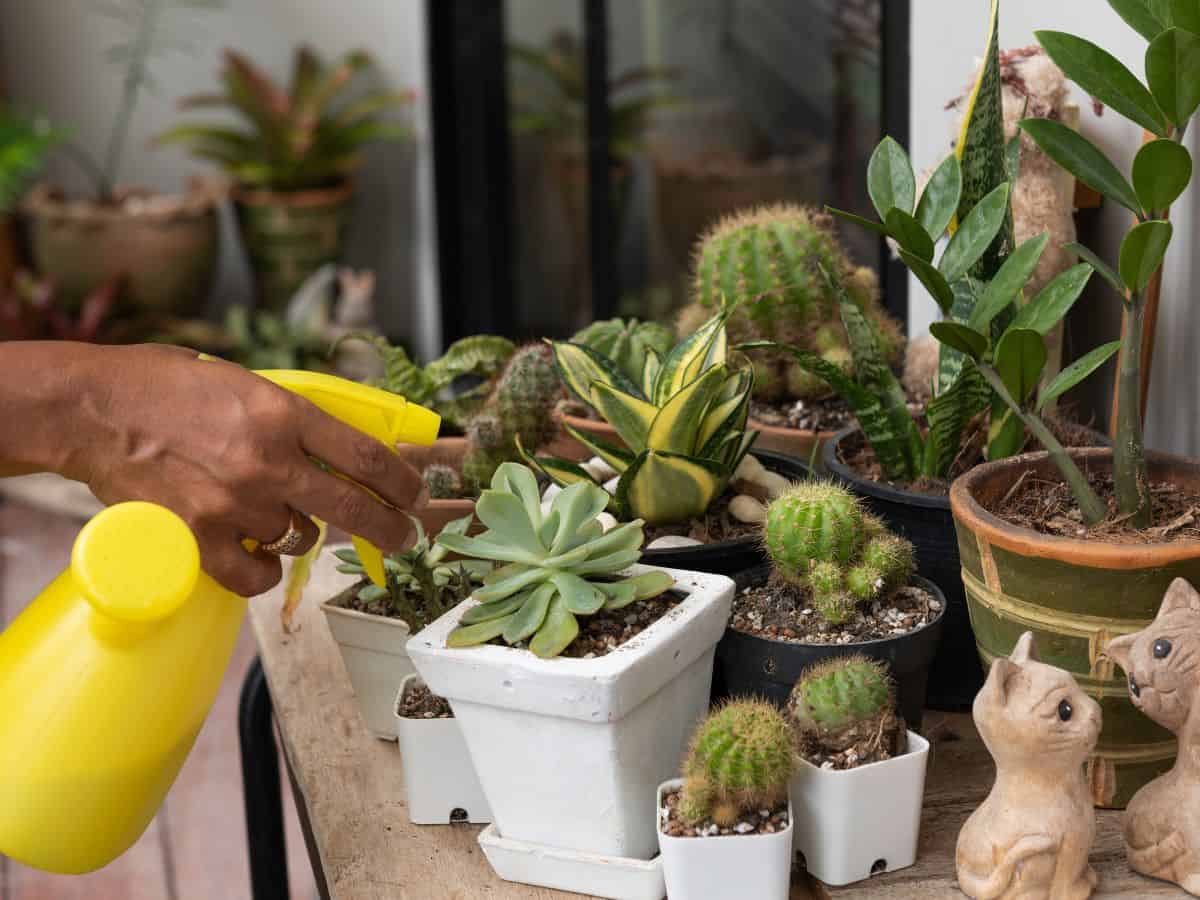
The frequency with which you water succulents is the difference between life and death.
No pressure, right?
It’s a common misconception that, since succulents and cacti usually live in dry climates, they don’t like water very often. That’s not entirely true. While succulents can survive long periods of drought, they’re usually happy to get a drink on a more regular basis.
So, we come to the obvious question: “How often should I water my succulent?”
While I can give you some pointers, there is no single correct answer. Your watering schedule can depend on many factors:
- What species of plant is it?
- Is the plant in its dormant period?
- How much light does the plant receive?
- Is that light from the sun or is it artificial?
- How much organic matter is in the dirt?
- What temperature are your plants kept in?
- How humid is the air?
- Is there airflow or wind around the plants?
- What season is it?
- What’s the weather like?
Honestly, I could go on… but that’s not the point. I’m trying to convey that there is no silver bullet. There isn’t an answer that will always be correct.
That being said, I know it’s not helpful to simply say “Water it when it needs to be watered.” So here is my personal rule of thumb:
Water your succulents about once every 10 days.
Keep in mind that all the factors above can affect that estimate. The best policy is to pay attention to your plants and learn how to identify their needs.
Root Rot
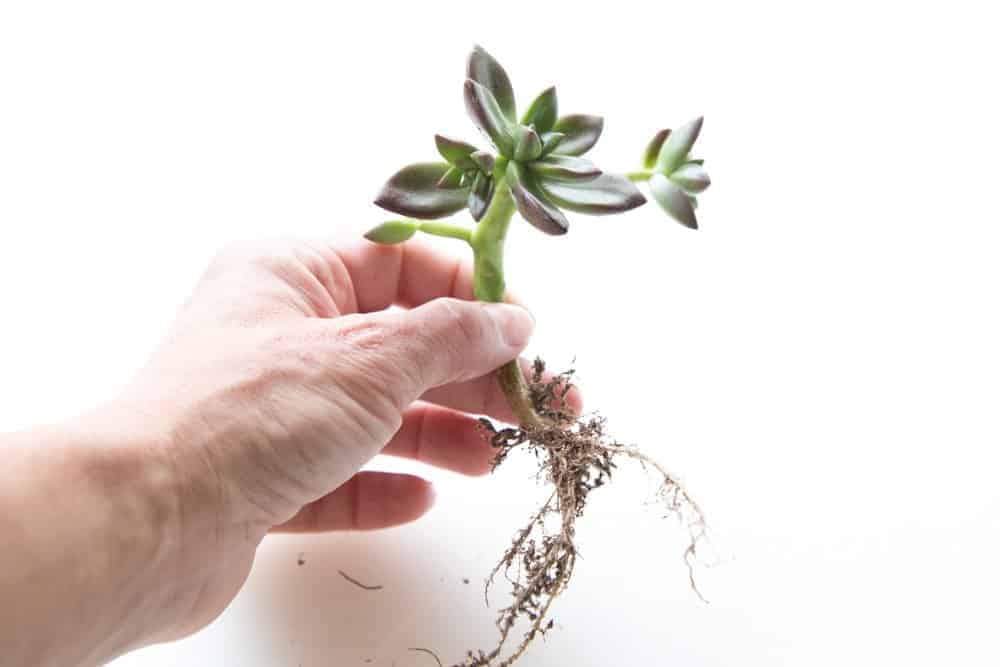
The reason that the frequency of watering is so important is because of the danger of root rot.
Much like people, plants don’t want to be submersed in water all the time. If your friend was thirsty you wouldn’t dunk them in a pool and say, “There’s water all around you!” Sure, they could maybe drink a little bit, but it would quickly be more of a problem than a solution.
Here’s a little-known fact: Plants primarily breathe through their roots. They take in oxygen and carbon dioxide both through tiny roots called root hairs. If the roots, or the soil around them, are wet then air can’t get through.
Without air, the roots die. Without roots, the plant dies. No bueno.
To avoid the untimely demise of your succulents, you need to give them time to dry out between watering. This gives them time to breathe in between gulps.
Is your soil staying wet for more than a day or so? The soil probably has too much organic material in it. Ingredients like coconut coir or peat moss retain water, keeping the soil damp for longer.
But don’t worry about the dirt just yet; we’ll talk about it later.
How to Tell When it’s Time to Water Your Succulents
OK, so, if it’s inadvisable to just water your plants every ten days like clockwork, how can you tell when it’s the right time?
Fortunately, it’s not too hard. There are several methods I use to prevent overwatering.
Finger Test
The Finger Test is the first one. It’s the fastest, the easiest, and one of the most accurate. Heck, it’s so intuitive you’ve probably done it before without realizing that you’re using an ancient, artful technique.
Simply stick your finger in the dirt and feel if it’s wet or not. Is it wet? Don’t water. Is it dry? Water.
Easy.
There’s a bit more to it, of course. The surface of the dirt can dry in as little as 20 minutes if it’s hot out. Be sure to stick your finger down at least 2 inches. Is it obviously wet, or even just damp? Forget about watering. Bonus tip: If the dirt seems uncharacteristically cooler than the soil on the surface, that means it is still a little wet.
If the dirt is too compact to stick your finger that deep, you’ve got a problem that isn’t watering-related; you’ll need to repot it with fresh dirt. Also note that if you’re using a gritty mix, a soil mixture with little or no organic matter, this method probably won’t work. Gritty mixes drain water very quickly, so they’ll be dry pretty much 100% of the time.
Wait for Wrinkled Leaves
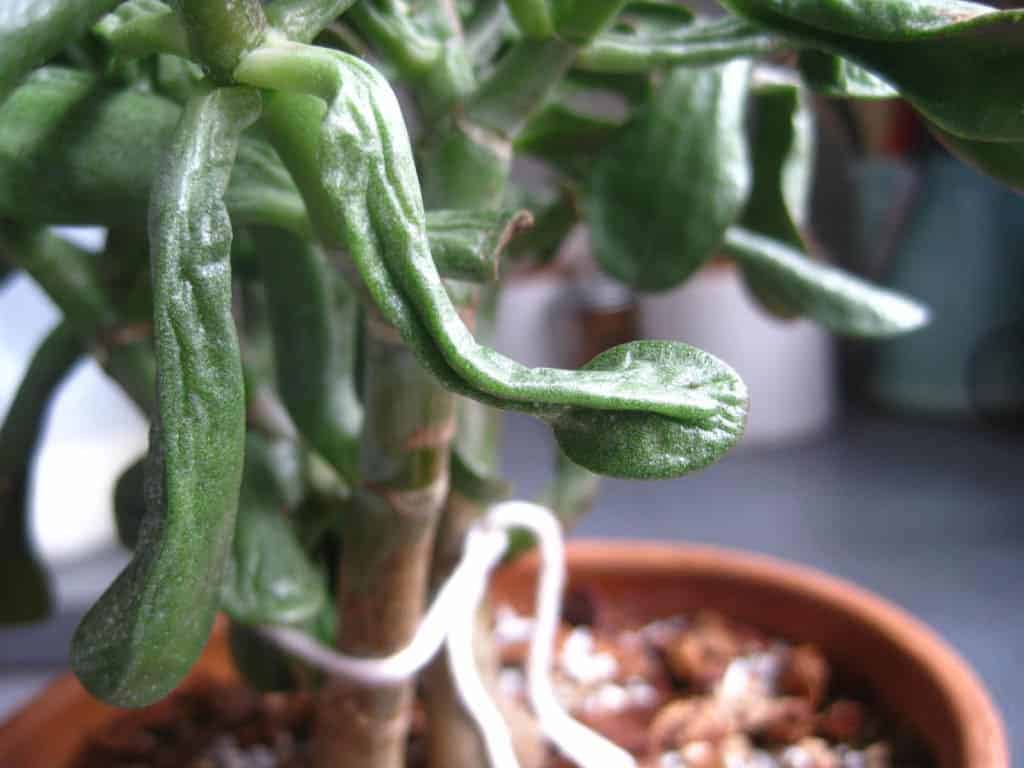
The next way to tell if your plant needs a drink is to simply look for slightly wrinkled leaves. Very fleshy, plump plants like Aloe or many kinds of Sedum will begin to wrinkle as they get thirsty. It’s not unhealthy or dangerous to let them get that dehydrated. It’s just like a person eating when their stomach starts rumbling.
No products found.
If you water the succulents when you see this sign, you should see them begin to perk up within a couple hours (or certainly by the next day). The leaves will re-inflate and be back to their regular fat-plant selves.
This doesn’t work for all succulents, of course. Cacti don’t have leaves, after all. Other succulents, like Sansevieria, have a very thick cuticle (that waxy “skin” of the plant). Since the leaves are so rigid they don’t show wrinkling at all… until just before they die.
Although I wouldn’t usually recommend it, another version of this method is to wait until the plant starts drooping. Drooping indicates that the stem is losing turgor (rigid structure caused by water pressure). The stem only begins to lose water after the plant has already cut water to the leaves… so it’s very thirsty at this point.
This only works on plants that have a tall, skinny stem. There aren’t too many succulents that fit the bill. An example might be a few species in the Kalanchoe genus, like K. tubiflora.
Soil Moisture Meter
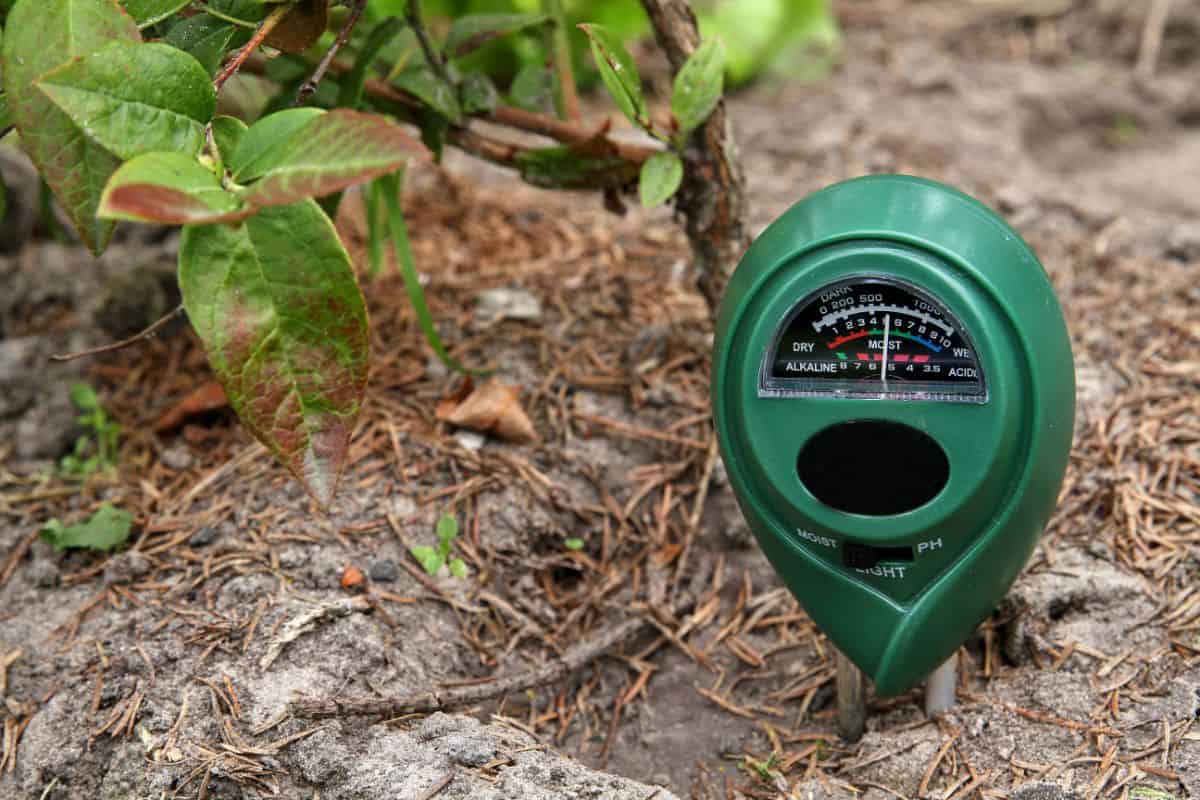
Lastly, you can use a soil moisture meter to see how wet the soil is. I guess this is a good option for people who don’t like to get their hands dirty (why are succulents your hobby, then?).
They’re dead-simple to operate: just stick the metal ends in the soil and wait a minute for the device to display the level of moisture. You’re looking for a reading of zero moisture, or very close to it.
There are some pros and cons to moisture meters. On one hand, the metal probes can go much deeper into the soil than your finger will, so you can be sure the dirt is dry all the way through. On the other hand, cheap moisture meters are often too finicky or just plain wrong… and your plants will take the hit.
If you want to go this route, I’d suggest investing in a nice moisture meter. The high-quality ones come with some cool bells and whistles, like being able to measure soil pH as well.
Seasonal Differences

It goes without saying that your watering habits should change as the seasons do – especially if your plant is outside.
The conditions will differ depending on your location and climate. Do you have hot, dry summers like the southwest US? You’ll need to increase your watering dramatically. Summers in Arizona might have you watering your succulents every day.
Summers on the east coast of the US are totally different. They’re hot, yeah, but they’re also humid as all get-out. (Seriously, I’m drowning over here. Send help.)
Even if the temperature is 100 degrees Fahrenheit like it is in Arizona, that 100% humidity will prevent water from evaporating quickly. In this case, you water your succulents less often. During summers in Virginia, I usually water every 5-7 days.
Fall and winter are the opposite, of course. Cooler temperatures, shorter days, and less intense sun mean the plants don’t need as much water. In the case of succulents, many can’t survive frost and snow anyway. They should probably be inside (unless you have hardy succulents).
For my outside plants during the winter – I water them once every few weeks. You’ll need to consider the weather too – watering right before a freeze might cause damage. If snow (or any precipitation) is happening at least once a month, I probably wouldn’t water them at all!
Seasonal Plant Dormancy
But climate isn’t the only thing to consider during changing seasons. Many plants, succulents included, undergo a dormancy period as part of their yearly cycle. It’s a lot like bears hibernating, only it doesn’t always happen during the winter!
In their natural habitat, plants sometimes adapt to unfavorable conditions by going into a kind of “power-saving” mode. A cactus in the desert can expect that there won’t be any rain during the dry season, so there’s not much point in trying to grow.
So, it goes dormant every year at that time. The cactus slows down its metabolism to a trickle, only expending enough energy to stay alive.
If you were to stumble upon a dormant succulent in the wild, you might think it was dead! Sometimes they look so dried out, so desiccated, that you can scarcely believe there’s any life left. Still, a little drink of water and they’ll perk right up!
I hear you asking, “When is my ____ dormant?”
If only it were that simple!
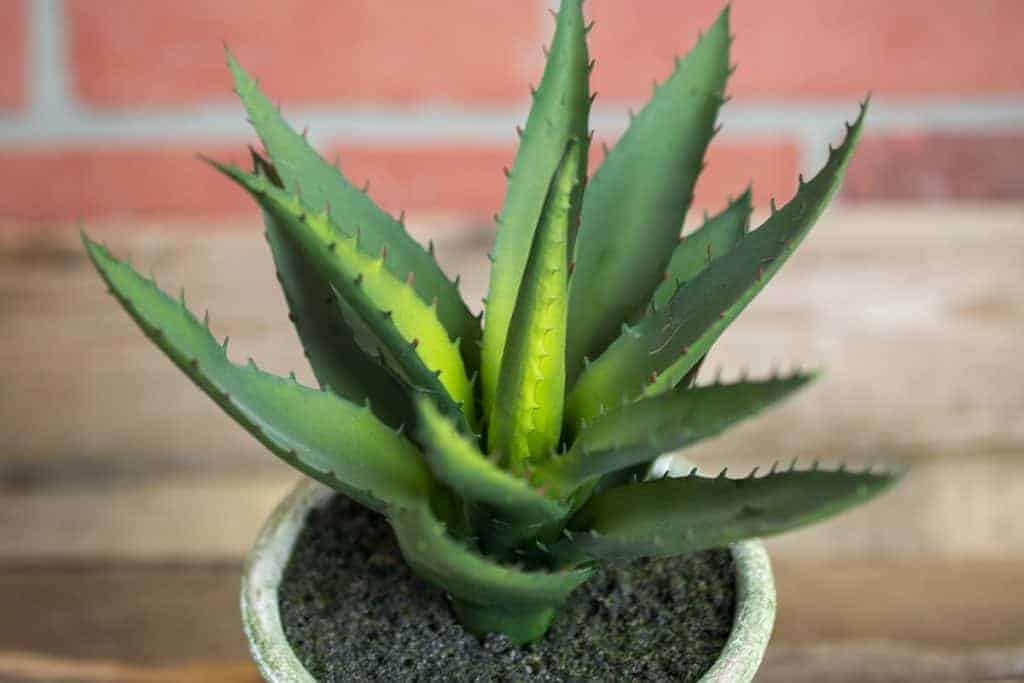
Every species could have a different dormancy period since it is usually determined by the climate of their natural habitat. That means every individual Echeveria species can potentially have its own dormancy period!
In reality, we generalize plant dormancy periods on a genus-level. That means that we assume that all Echeveria are roughly the same in this regard. That mostly works pretty well, barring a few outliers.
Here is a table of a few genera (plural of genus) and their dormancy periods:
| Summer Dormant | Winter Dormant |
|---|---|
| Aloe | Agave |
| Sansevieria | Echeveria |
| Sedum | Euphorbia |
| Haworthia | Lithops |
Plant dormancy adds a whole ‘nother level of complexity to succulent care.
Honestly, though? It’s not super important.
Plants don’t actually know what the date is, right? They don’t know if it’s technically winter or not. And, chances are, your succulent is actually native to a different continent anyway. It’s not in the climate it’s adapted to, so the dormancy thing might not even be necessary.
Plants do take cues from their environment. Is the temperature dropping? Are days getting shorter? That’s the kind of things that a plant notices, and that’s how they know the season is changing.
However, a lot of us keep succulents inside for one reason or another. And guess what? Thanks to the miracles of central air conditioning our houses stay pretty much the same all year. Plants inside never experience weather or climate differences.
Keep in mind that the windowsill, that classic perch of plants, is an interesting combination of inside and outside. It experiences slight temperature shifts and all the slow shift in light levels throughout the year.
The takeaway here is that, unless your plant is outside, don’t worry about seasonal dormancy. Even if it is outside, don’t stress out about it. For almost every plant, it isn’t a significant issue.
How Much to Water Succulents and Cacti
A million-dollar question, eh? There’s lots of conflicting information and different methodologies, so which should you follow?
Like every other aspect of succulent care, we look to nature first for a guide. Many succulents come from areas that have low annual rainfall. A typical desert or arid region will only have a handful of rain showers per year.
Instead of an inch of rain every couple of weeks, the sky dumps several inches all at once – and does that a few times a year.
That pattern is a good one for most succulents: they like to be thoroughly drenched at infrequent intervals.
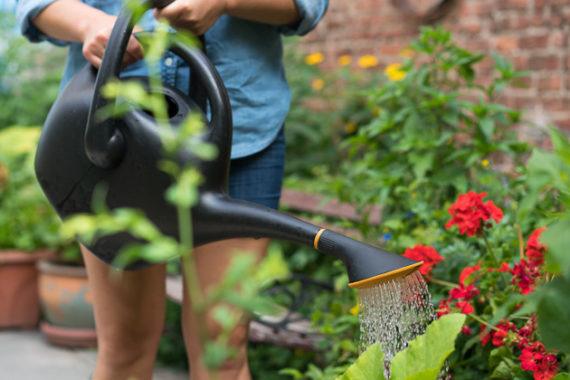
In other words – a lot of water all at once, but not very often.
That runs counter to intuition for a lot of people. Since there isn’t a lot of rain in the desert or whatever, your succulents and cacti shouldn’t get a lot of water. This leads to underwatering (which is pretty hard to do with succulents).
So, here’s what you do: keep pouring water until you see it start to drain out of the bottom. That’s how you know the soil is fully inundated.
Your chubby little plant will be grateful for the big gulp and be satisfied for a good while after.
Watering Technique
We know how often to water succulents and how much to water them. What about the actual application of the water. Surely, it’s as easy as pouring water on them?
Well, yeah, it is that easy for the most part.
Let me start by pointing out the wrong way to water. Don’t use a spray bottle. No misting, either. No matter how many times you squeeze the trigger, you’re only going to wet the top few centimeters of the soil.
There aren’t any roots up there to drink the water!
In fact, it can be detrimental to your plant if you only water the surface of the soil. The succulent will be forced to grow roots towards the surface, rather than down and out. You’ll end up with a weak root system that doesn’t support the plant.
Instead, we do the opposite. Make an effort to fully drench the soil all the way through to the bottom. The best way to do this is to pour water on the dirt near the base of the plant. It shouldn’t be a trickle of water, either. Pour like you’re pouring tea or coffee.
If you’re able, wet all of the soil in the whole pot. That encourages a wide, healthy root system. If I’m able, I usually put my plants in the sink and soak ‘em through. Outside, a generous hosing works quite well.
I only use a hose because I have a lot of plants and not a lot of time. Ideally, you would be careful not to get water on the leaves.
Strong water pressure (or touching) can remove the fine white powder that is present on the leaves of some succulents (which is called the farina – it’s like sunscreen for plants). Water drops on leaves can also magnify sunlight and cause spots of sunburn in harsh light.
In Pots Without Drainage
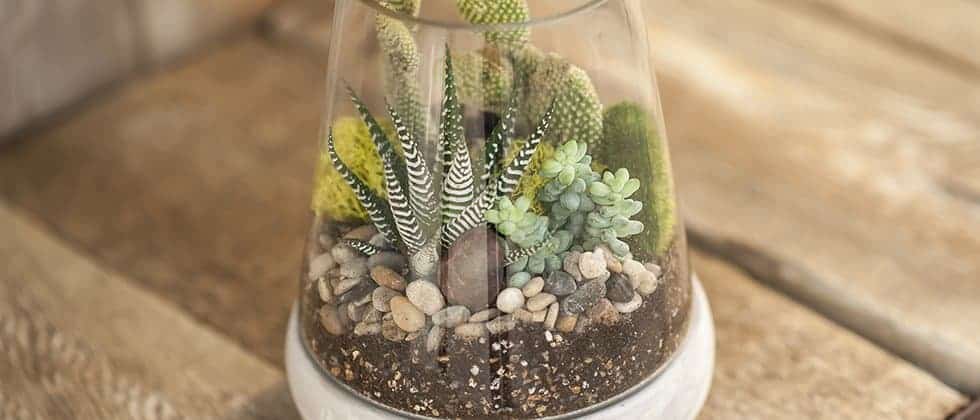
To be clear, I don’t recommend planting succulents in containers without drainage.
But… you’ll probably ignore that advice. The recent popularity of succulents has seen them integrated into all kinds of cute, artsy crafts. Cacti in teacups, succulent birdbaths, terrariums - that kind of stuff.
While adorable, it isn’t the best circumstance for your succulents. Not having drainage puts them at very high risk of developing root rot.
And don’t think that a layer of pebbles at the bottom will create drainage, either. It doesn’t. It actually worsens the problem, because of a phenomenon called “perched water table”. We’ll talk about that later, though.
If you’ve gotta plant your jade in that boot or whatever, there’s really only one way to approach watering. You simply water less. A lot less.
Rather than drenching the soil, you pour a small amount (probably about a teaspoon-full or so) directly at the base of the plant.
You also want to try to stretch out the amount of time between watering as much as possible. Keep the container in a dry place with lots of light. You want to dry out the soil as much as possible, but the reality is it will never really be fully dry.
Your goal is to find the balance between parched and permanently damp. Good luck!
Although it’s not ideal, many succulents and cacti can and do survive in this situation. They are some of the toughest plants on the planet. They will endure a lot of hardship if they have to.
Just so you know, you have options to avoid or rectify the no-drainage situation.
You can use a cachepot. A cachepot is just a smaller plastic pot that goes inside and is hidden by a larger container. You plant your succulent in a cachepot that has holes, then place it inside of that porcelain elephant knickknack.
It looks like the succulent is planted directly in your whimsical container, but when its time to water you can just remove the cachepot and water. Plant is safe, tchotchkes are safe. Everybody wins.
Another option is to drill drainage holes into that “World’s Best Dad” mug. Drilling holes in ceramic or even glass isn’t very difficult. With a standard electric drill and a diamond-tipped drill bit, you can get through any material in a couple minutes.
Getting Plants on a Schedule
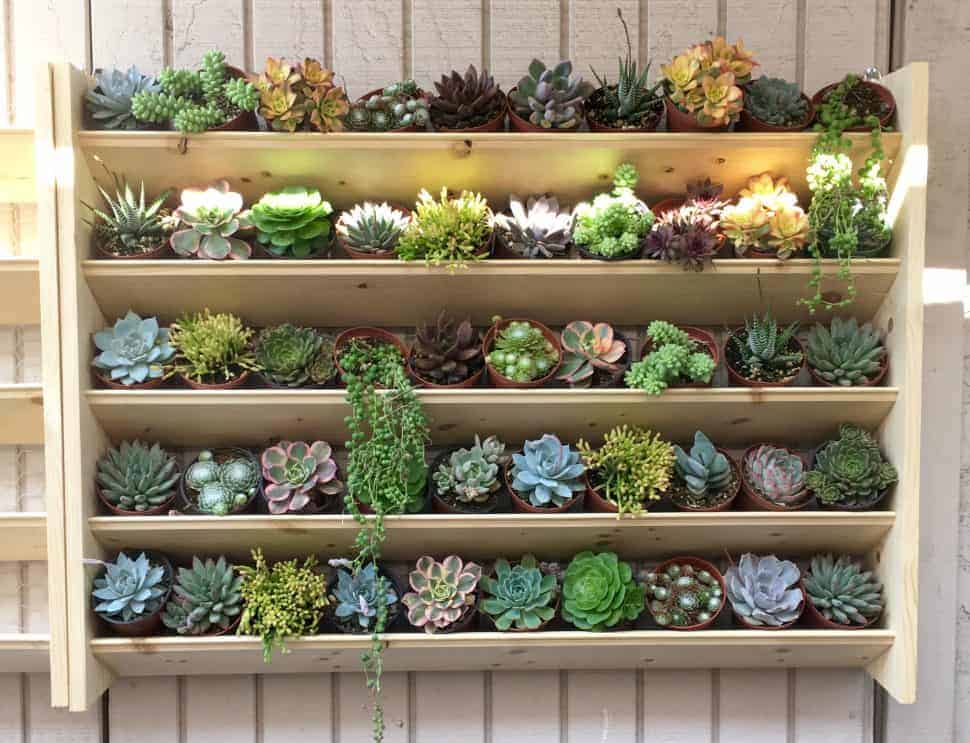
This is the ultimate goal.
Eventually, your collection will swell from a single moon cactus to dozens of succulents occupying every inch of your house. It’s inevitable.
But watering all those plants can be quite the chore. Remembering whose turn it is to be watered today, how much and how often, etc. can get exhausting. Heck, the half the reason we like succulents so much is that they are low maintenance.
For this reason, I slowly adjust all plants to the same watering schedule.
It’s tough since they all have different needs. I’ve found that jades and Kalanchoe get thirsty a couple days before the rest of my plants. They have to suck it up, though, because relationships are all about compromise.
And suck it up they do (the water, anyway). You can condition your plants to all drink at the same time. Just water the new plants a couple days later each time you water until they sync up with the rest of your collection.
The trick here is to err on the side of drying out, rather than watering them early. Eventually, you’ll be able to water all your plants on the same day, and simply enjoy looking at them the rest of the time!
That’s all there is to watering! The key takeaway is to water succulents infrequently but use plenty of water. Try to water directly at the base of the plant, not on the leaves. Use every ten days as your baseline, but watch your plants and adjust accordingly based on the weather, the season, and the species.


Cathy Stephenson
Thank you!
Patrick Grubbs
My pleasure 🙂
Eva Stepen
Hi Patrick, can I ask you about how to water Senecios? I had two Senecio Mandraliscaes at home and both of them were doing okay during the Winter. I watered them maybe once in 10 days and continued to do so until Summer but their leaves started to shrivel up then until only the top part of the stems remained. I tried giving them water more often but their leaves continued to shrivel up and I don't know what I'm doing wrong.
About a week ago, I also bought a Senecio Haworthii and read somewhere that I should only water it very spairingly, maybe once a month. Could you, please, give me some advice? I'm afraid I'm gonna kill my third Senecio too. Any advice is appreciated! Thank you!
Patrick Grubbs
Giving out timeframes for watering is a risky business because it'll be different for every environment and every plant.
The safest way to water your new Senecio is just to wait until you see the leaves beginning to shrivel up. Then wait a few more days. Still shriveled? Then go ahead and water. They can always bounce back from being underwatered, but it's a lot harder to fix overwater (which sounds like what happened to your first pair).
Wiliam
Hi Patrick, do you have any soil moisture meter suggestion?
Patrick Grubbs
Hey William. Honestly, I don't much use them. I find that the finger-test usually suffices.
If you really want a moisture meter, I'd recommend buying the second cheapest one (which is usually my strategy for all online electronic purchases hahaha).
Roger Bells
Great article, Patrick! Can you tell me how often should I water my Snake Plant? Thanks!
Patrick Grubbs
Snake plants are a little more tolerant of water than some other succulents, but it's hard to tell when they're really thirsty since their leaves aren't plump.
I'd say you should water it every 10 days on average, but if you're not sure, you can just wait until you see it start to wilt slightly and then water.
Melinda sisk
I am learning about growing the plants I adore. I bought a pumpkin that had succulent in it - I know cutesy but... I noticed it didn’t have holes so I drilled some - it is a real pumpkin!! I read growing succulents in moss which it has on top but should I remove the plants from this live pumpkin? Just water around the bass of the plant in this moss ? Help please I don’t want them to die
Succulents
Watering succulents can be SO hard, and there are so many factors at play including climate, humidity, soil type, and of course, the type of succulent. I found that deep watering succulents and soaking the soil really well works. Then I wait to water again until the soil is bone dry.
Yann
Great article and fun to read. that doesn’t try to teach the only truth. Advice we’ll taken